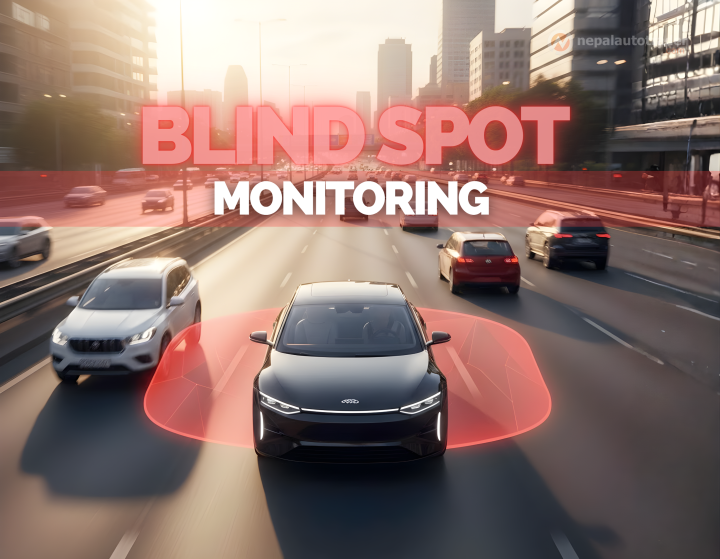
Understand how blind spot monitoring systems prevent accidents.
Learn to set your rearview and side mirrors like a pro.
Discover easy driving hacks to avoid blind spot collisions.
Gain insight into modern EV safety technology.
We’ve all been there, cruising down the road, music on, everything smooth, when suddenly a car appears out of nowhere. That “nowhere” is your blind spot. It’s the sneaky area your side or rearview mirrors can’t see, where other vehicles love to hide just when you’re about to change lanes or overtake.
In simple terms, your blind spot is that invisible zone beside and slightly behind your vehicle. And if ignored, it can turn a casual lane change into a very bad day.
With the rise of electric vehicles (EVs) and smarter safety tech, the Blind Spot Monitoring System (BSMS) has become a must-have feature. Most modern EVs and premium petrol cars come equipped with this system as standard.
The concept is beautifully simple: sensors placed around your car constantly scan the sides and rear. If another vehicle enters your blind zone, the system alerts you instantly, usually with a blinking warning light on your mirror or an audible beep. Some advanced models even gently steer you back into your lane if you start drifting.
In short, it’s like having an invisible co-driver whisper, “Careful, there’s someone next to you.”
Blind spots are small but deadly. Most side-collision and overtaking accidents happen because a driver didn’t spot another car tucked into that hidden zone. When two vehicles are traveling side-by-side at similar speeds, the one in the blind spot seems to vanish.
And here’s the kicker: even the best mirrors can’t cover these areas completely. That’s why understanding mirror positioning and driving awareness is your best defense.
Mirror adjustments sound boring, until you realize they can literally save your life. Let’s fix that mirror setup right now.
Sit comfortably in the driver’s seat. Adjust your interior rearview mirror (IRVM) so that you see as much of the rear window as possible, not your face or car seats. If you don’t see any part of your car’s interior, congratulations, you’ve nailed it.
This mirror covers the left lane, especially important for spotting fast-moving vehicles sneaking up on you. Tilt it so that only about 10–15% of your car’s body is visible, the rest should show the road. This gives you a wider perspective and fewer surprises from the left.
In countries like Nepal, where vehicles drive on the left, overtaking usually happens from the right. Set the right mirror to show as much of the road as possible, minimizing your car’s reflection. This way, you’ll always have eyes on that critical passing lane.
Check Twice, Move Once: Always glance over your shoulder before changing lanes. The sensors help, but your eyes are unbeatable.
Never Overtake from the Left: It’s unsafe, unpredictable, and often illegal. Stick to overtaking on the right where visibility and reaction time are better.
Keep a Safe Distance: A few extra meters give both you and your sensors enough time to react.
Use Turn Signals Religiously: Let others know your intentions; it’s not just polite, it’s essential.
Stay Focused: Even with BSMS, distracted driving is still the top cause of accidents.
The evolution of blind spot technology is rapid. Beyond simple alerts, newer systems now integrate 360-degree cameras, lane-keeping assistance, and AI-driven object prediction. Some cars even use radar mapping to predict potential collisions before they happen.
In EVs, where quiet motors make vehicles harder to hear, these features are not just convenient, they’re critical. The next generation of driver assistance aims to make every trip safer, smarter, and stress-free.
Blind spots may be invisible, but with the right awareness and tech, they’re completely manageable. Blind Spot Monitoring Systems are no longer luxury features, they’re lifesaving essentials for modern driving.
As drivers, we can’t control every vehicle around us, but we can control how prepared we are. Adjust your mirrors properly, trust your instincts, and let technology be your silent guardian on every turn.